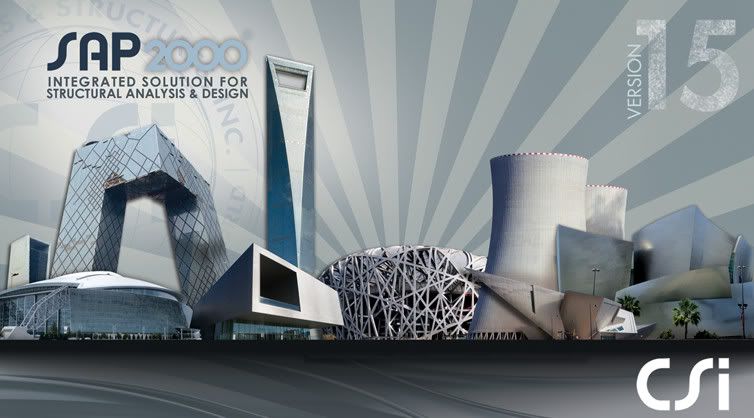
The SAP name has been synonymous with state-of-the-art analytical methods since its introduction over 30 years ago. SAP2000 follows in the same tradition featuring a very sophisticated, intuitive and versatile user interface powered by an unmatched analysis engine and design tools for engineers working on transportation, industrial, public works, sports, and other facilities.
From its 3D object based graphical modeling environment to the wide variety of analysis and design options completely integrated across one powerful user interface, SAP2000 has proven to be the most integrated, productive and practical general purpose structural program on the market today. This intuitive interface allows you to create structural models rapidly and intuitively without long learning curve delays. Now you can harness the power of SAP2000 for all of your analysis and design tasks, including small day-to-day problems. Complex Models can be generated and meshed with powerful built in templates. Integrated design code features can automatically generate wind, wave, bridge, and seismic loads with comprehensive automatic steel and concrete design code checks per US, Canadian and international design standards.
Advanced analytical techniques allow for step-by-step large deformation analysis, Eigen and Ritz analyses based on stiffness of nonlinear cases, catenary cable analysis, material nonlinear analysis with fiber hinges, multi-layered nonlinear shell element, buckling analysis, progressive collapse analysis, energy methods for drift control, velocity-dependent dampers, base isolators, support plasticity and nonlinear segmental construction analysis. Nonlinear analyses can be static and/or time history, with options for FNA nonlinear time history dynamic analysis and direct integration.
From a simple small 2D static frame analysis to a large complex 3D nonlinear dynamic analysis, SAP2000 is the easiest, most productive solution for your structural analysis and design needs.

What’s new?
- New graphical user interface with tabbed windows.
- New DirectX graphics.
- Display and output of frame stresses.
- Load optimization feature to determine the optimal loading scale factors to achieve goals and limits on displacement and force response throughout the structure.
- Built-in European concrete and steel material properties.
- Canadian NBCC loading for wind, seismic, and response-spectrum.
- American ASCE-7 loading for wind, seismic, and response-spectrum.
- Italian NTC 2008 response-spectrum functions with geographic database.
- Indian steel frame design code IS 800 2008.
- New Zealand steel frame design code NZS 3404-1997.
- Canadian steel frame design code CSA S16-2009.
- Updated Hong Kong concrete frame design code to include Supplement 1.
- Australian concrete frame design code AS3600-2009.
- Enhanced Eurocode 3-2005 steel frame design, including design for Class 4 sections.
- National annexes for Eurocode 2-2004 concrete frame design for Singapore, Germany, and Portugal.
- National annexes for Eurocode 3-2005 steel frame design for Singapore, Germany, and Portugal.
- Hybrid steel frame section property.
- Simple arc for tendon profile definition.
- Updated API functionality.
- Import of StruCAD*3D design parameters and wave acceleration loading.
- Note that the Bridge module has been moved to the CSiBridge product with expanded features and capabilities. Basic moving-load analysis has been retained for non-bridge applications.
- Other minor enhancements.
No comments:
Post a Comment